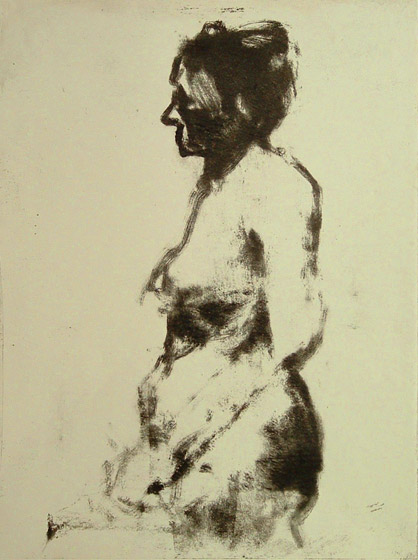
Sangram Majumdar
When we draw the figure it's obviously the human form that first captivates, then dominates our interest. In the presence of the naked body of the model, who is going to notice that her torso and head are framed by a distant door, or that an easel's vertical support is visible just behind her? Perhaps we feel overwhelmed by the complexity of the figure and think that our time is best spent working out that problem first before trying to add something as mundane as the chair upon which the model sits, or the background which, after all, is merely the background. Many beginning draughtsmen would gladly "outsource" the drawing of their backgrounds if that were possible.
In critiquing student drawings in progress I often note the absence of any attempt to address the contours or shapes that are formed by the supporting structures of chair, pillows, or background elements, all of which, in fact, supply wonderful negative shapes that actually assist the locating and proportioning of the figure. The reply I most often hear is, "I haven't gotten to that yet." By the end of the pose these issues often remain unvisited and unresolved, producing a type of drawing all too common in beginning drawing classes. The figure floats in a sea of white paper. Robbed of its spatial context and the cues to depth provided by the figure's overlapping of elements of the space, the drawing never achieves a convincing depth or volume, no matter how sensitively the contours and tonal modulations of the body are rendered.
The artists shown in the album below all place a value on dealing with the figure, not as symbol or sign, but as a form seen within a specific spatial context. From Leonardo's elaborate analytical perspective projections, to Vuillard's squiggling linear probes, to Giacometti's obsessive search for position, scale, and direction, all of these artists reveal an attempt to relate the figure to its space, to explore the phenomenon of corporeality, of "embodiment," and the mystery, if such a Romanticism may be excused, of "the spirit made flesh."

No comments:
Post a Comment